|
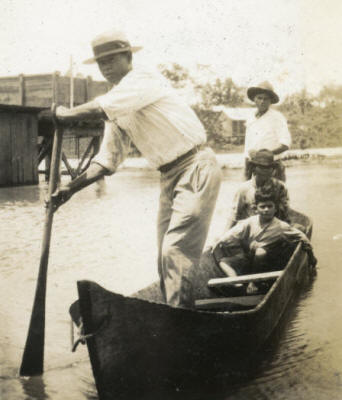 THIS IS THE FOURTH PAGE OF
DOCUMENTS FOR THE FIRST HALF of 1932
on Nicaragua's Caribbean Coast region, housing
documents dated from May 1-27.
THIS IS THE FOURTH PAGE OF
DOCUMENTS FOR THE FIRST HALF of 1932
on Nicaragua's Caribbean Coast region, housing
documents dated from May 1-27.
The Sandinista raids of
foreign commissaries, mining
districts, and Moravian missions
continue into May, as does the
intensification of the Guardia’s
counterinsurgency campaign.
The Department of Southern
Bluefields remains relatively
quiescent during this period (with
"raids" at El Rama undertaken by
"local unorganized groups" (Hall, 1
May, p. 5), in contrast to the
situation further north, where EDSN
strikes and Guardia counter-strikes
are ratcheting up in both scale and
intensity. Lt. Surprenant’s
exceptionally revealing 4-page
report on his two-week "scouting
patrol" along the Lower Rio Coco
offers a fascinating glimpse into
the unfolding battles in this zone
(12 May). According to
Surprenant, an EDSN column launches
a quick raid against the village of
Sacklin on April 30 before heading
back upriver, "taking all the
Indians’ clothes" with them, as well
as eight Indian prisoners, and
"leaving the Indians behind them
naked." Surprenant got most of
his facts right, including the death
of EDSN Sgt. Major Francisco
"Pancho" Montenegro, whose death in
the Kisalaya assault Sandino also
reported (18 May), and there is
little reason to doubt his portrayal
of the rocky relations between the
EDSN and the Indians of Sacklin,
some seven months after Adolfo
Cockburn's death. Moravian
missionary A. O. Danneberger's
anguished letter of 18 May portrays
the EDSN as a relentless scourge
wreaking destruction & death;
prominent in his narrative are the
Sandinistas' murder of Karl
Bregenzer and plunder at Musawas;
their destruction in Tuburus of the
church and evangelist's house; and
"whether Sandino also aims at the
extermination of our mission."
The extent of the EDSN’s penetration
of the zone is highlighted
in Guardia 2nd Lt. Francisco
Gaitán’s gripping combat report of
19 May describing his unit’s
two-hour firefight against a group
of 60-80 rebels at the village of
"Sing Sing" (actually Sinsin, inland
from Puerto Cabezas along the Río
Likus, a tributary of the Río Wawa),
which offers an important window on
one wing of the the rebel offensive.
But the main event is unfolding in
the Pis Pis and Neptune mining
districts, where upwards of
500 Sandinistas are converging led
by Generals Pedron Altamirano, Pedro
Antonio Irias, Ismael Peralta, and
others. Second Lt. Earl Gray's
combat report of May 27 describes
his patrol’s firefights with a large
rebel column of some 150 men,
reputedly under Generals Pedrón and
Peralta, near Neptune Mine on May 21
and again on May 23 — both
decisively repulsed by a Guardia
counteroffensive that included
concentrated use of airpower (27
May). The battle for the
mining district during this week
(May 19-26) is the main subject of
the page to follow.
Meantime we learn that the banana
industry is holding its
own, with ample employment but low
banana prices (having dropped to 30¢
per stem from 50¢ two years
earlier), and that the Guardia has
established a "woman venereal
hospital and prison" in Bluefields,
presumably to clamp down on
prostitution and to address the
rising incidence of venereal disease
among the troops (Leech, 4 May).
In short, while Sandino
trumpets to "Indo-Hispanic
observers" the EDSN’s
smashing military successes across
the country (18 May), in fact his
Army's big offensive is meeting the
brick wall of the Guardia Nacional
and its cívico allies in the mining
districts and nearer the Coast —
events toward which the general
populace throughout most of the
region seems indifferent.
|
|
PERIOD MAPS
|
|
1894 mosquito
shore

27 MB,
library of congress
|
1920s
Standard Fruit

6.5 mb,
US National archives
|
1928 Rio wanks
Patrol

3 mb, us
national archives
|
1931 Moravian

2.4 mb,
comenius press
|
|
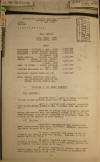
|
1 May 1932.
Extracts from GN-2 Report Covering the
Month of April 1932.
[NOTE:
These excerpts constitute the sum total
of text devoted to the Atlantic Coast
region in this 30-page intelligence
report covering the entire country. The
image to the left is the report's cover
page only.]
"
[p. 1]
LOCATION OF THE
ENEMY ELEMENTS. ¶ . . .
[p. 4]
(Q) PERFECTO CHAVARRIA. . . . Chavarria
until recently had been operating in the
Eastern Area mainly along Coco River.
[NOTE: Of the 17 jefes surveyed in
this section, none were reported active
in the Eastern Area] ¶
. . . UNITS
IN CONTACT. ¶ . . .
[p. 6]
21 APRIL. The Guardia deserters
from KISALAYA together with about thirty
bandits attacked the cuartel at KISALAYA
at 0300. Bandits and deserters were
driven off after severe fighting. Bandit
casualties four known dead including
ex-Sgt. Sebastian Jimenez, the leader of
the deserters. Guardia casualties, two
wounded including Lieut. Gaitan.
[NOTE: Of 18 contacts during the
month, one was in the Eastern Area] ¶
. . .
[p. 7]
ENEMY STRENGTH
AND MOVEMENTS: ¶
Group of 200 reported as passing two
leagues on north side of Rio Grande
headed north and thought to be headed
for the east coast. Jefe reported
as Pedron Altamirano. ¶ . . .
[p. 8]
Manuel Irias with group, number unknown,
reported operating on Rio Siquia near
Chontales border, 21 April. [NOTE:
Of 18 items in this category, none show
EDSN activity in the Eastern Area; as
seen below, Pedrón’s band was far inland
near Matiguás.] ¶ . .
.
[p. 10]
WEEKLY SUMMARY OF
INTELLIGENCE, WEEK ENDING 4 APRIL 1932.
¶ . . . Bandits that have been
hanging around the Coco River near Sang
Sang, are reported to have moved up
river to Bocay. ¶ . . .
[p. 11]
WEEKLY SUMMARY OF
INTELLIGENCE, WEEK ENDING 11 APRIL 1932.
¶ . . . Pedron Altamirano and 200
men reported from Chontales as being 2
leagues north of Rio Negro, (in
Matagalpa south of Matiguas) on April
1st, moving east. ¶ . . .
[p. 12]
GENERAL
INFORMATION: ¶ . . .
On the afternoon of April 4th, a part of
the garrison at Kisalaya mutinied and
killed First Lieutenant Charles
Levonski, GN. This mutiny was led
by Sgt. Jimenez and after killing
Lieutenant Levonski, seriously wounding
Lieutenant Reyes, and wrecking the Radio
Station, looting the store room and a
commissary at Kisalaya, Sgt. Jimenez and
14 men moved up the Coco River.
They took one Heavy Browning, one BAR,
two TSMGs, one Springfield rifle, two
rifle grenade dischargers, fifteen or
more Krag rifles, 26 rifle grenades, 9
hand grenades, 10,000 rounds of
Springfield ammunition, 2,000 rounds of
cal.45 and 4,600 rounds of Krag.
They went up the river as far as Pranza
by boat and then took a trail into
Honduras. It is not believed that
they had any understanding with the
bandits, but it is considered probable
that they will join them. ¶
. . .
[p. 13]
WEEKLY SUMMARY OF
INTELLIGENCE, WEEK ENDING 18 APRIL 1932.
[NOTE: Nothing on the Eastern
Area.] ¶ . . .
[p.
15]
WEEKLY SUMMARY OF
INTELLIGENCE, WEEK ENDING 25 APRIL 1932.
¶ . . . A group of about 50
including the deserters from Kisalaya
under ex-sergeant Jimenez, leader of
Kisalaya mutiny, attacked Kisalaya at
0300, 21 April. Four bandits
including Jimenez were killed, guardia
casualties two wounded including Lieut
Gaitan, commanding the post. ¶
. . . A group, number not
reported, jefe Manuel Irias, reported
operating on Rio Siquia near Chontales
border, on 21 April. ¶ . . .
[p. 16]
GENERAL
INFORMATION. ¶
. . . The severe repulse sustained by
the bandits at Kisalaya is believed to
have effectively discouraged bandit
operations on the lower Coco River for
the present. The Heavy Browning
Machine Gun that was recovered from
Kisalaya at the time of the mutiny, was
recovered by Lieut Gaitan near Pransa.
¶ . . .
[p. 18]
MISCELLANEOUS.
¶ . . .
[p.
26]
Information received that the KISALAYA
deserters had arrived in the vicinity of
Quilali four or five days ago.
That they were trying to get in touch
with Sandino and would offer their
services to him as a personal bodyguard.
¶ . . .
[p. 30] CONSOLIDATED
REPORT OF BANDITS CONTACTS OF THE GN FOR
APRIL 1932. ¶ . . .
KISALAYA, 21st, Lt. Gaitan, attack on
cuartel, 4 bandits killed [NOTE: Of
the 18 contacts listed for the month of
April, one was in the Eastern Area.]"
|
|
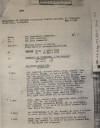
|
1.
1 May 1932.
Monthly Report of Events, Department of
Southern Bluefields,
Capt. Gordon
Hall, Bluefields, to Jefe
Director GN Managua, p. 1.
"A. PERIOD
From: 1 April 1932 To: 30
April 1932 ¶ B.
STRENGTH OF
COMMANDER (7th Company) Officers
12, Enlisted 163 ¶ C.
MILITARY OPERATION: Movements. ¶
1 Apr. Cpl. BARRIOS, Modesto #2501,
Pvts. LUQUEZ, Isabel #2522, RUGAMA,
Silvestre #2513, trans. fr. 7th. Co.
Bluefields to 3rd. Co. (C) Managua. Cpl.
CLEVELAND, Simeon #3051, Pvts. TEJADA,
Maximo #3033, PEREZ, Espectacion #4744,
IEVIS, Grefile #4950, RODRIGUEZ, Antolin
#4760, MARTINEZ, Francisco #4953,
RIVERA, FLORES #3113, duty Bluefields to
establish post at Prinzapolka. Pvts.
MARTINEZ, Salomon #3556, RUGAMA, Julian
#4899, fr. duty Bluefields to duty
Wuani. Lieut. HALL, Gordon, USMC.
arrived from U.S. Pvt. LEON Jose #4954
jd, by enlistment. ¶ 3 Apr.
Capt. HALL, Gordon; G. N. appointed
capt. and duty with 7th Co. So.
Bluefields. ¶ Pvt. CLOUGH,
Frederick #4955, jd. by enlistment. Lt.
PALACIO, J. P. with 15 enlisted cleared
Neptune Mines for Wuani. ¶
4 Apr. Lt. STEPHENSON, T. M. Lt. Rourke,
E. with 6 enlisted on river patrol, Rio
Rama, Rio Mico and return. ¶
5 Apr. VEGA, Benj. 1994 fr. duty
Bluefields to duty El Rama, Lt. CURCEY,
L. with 12 enlisted cleared Wuani for
Siuna and returned.. . . . "
|
|
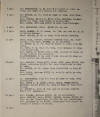
|
2.
1 May 1932.
Monthly Report of Events, Department of
Southern Bluefields,
Capt. Gordon
Hall, Bluefields, to Jefe
Director GN Managua, p. 2.
" . . . 6 Apr. Lt. STEPHENSON, T. M.
with 2 enlisted on river patrol, Rio
Rama, Rio Siquia and returned. ¶
7 Apr. Lt. ROURKE, E. fr. duty El Rama
to temp. duty Bluefields. ¶
Cpl. ORTEGA, Manuel B. #651, Pvts.
MORAZAN, Gonzalo #3340 fr. temp. duty
Tunky to Bluefields. ¶ Cpl.
LYNCH, Williams #2425 to duty from
furlough. ¶ 9 Apr. Pvt. HERNANDEZ, Pablo
#4956 jd. by enl. ¶ 10 Apr.
Capt. McAFEE, R. D. trans. fr. 7th. Co.
and fr. G.N. to United States. ¶
Capt. DAVIES, W. W. to temp, duty Puerto
Cabezas. ¶ 11 Apr. Capt.
HALL, Gordon, assumed command Dept. So.
Bluefields, vice Capt. McAFEE, R. D.
relieved. ¶ Lt. STONE, W. J.
fr. duty El Gallo to temp. duty Managua.
¶ Lt. CODY, T. E. (H.) fr. temp.
duty Managua to temp. duty Bluefields.
¶ Sgt. GARTH, K. #2702 with 3 enl.
cleared El Gallo on Police mission and
returned. ¶ Lt. STEPHENSON, T. W.
with 2 enl. cleared El Rama on River
patrol and returned. ¶ 12
Apr. Cpl. MACHADO, Tomas #483, Pvts.
CRUZ, Adam #4949, CALDERON Alejandro
#3472, fr. duty Bluefields to duty El
Rama. ¶ Pvt. LOPEZ, Mariano
#2875 fr. duty El Gallo to duty
Bluefields. ¶ 13 Apr. Lt.
STEPHENSON, T. M. fr. duty El Rama to
temp. duty Bluefields. ¶
Sgt. RAMOS J. M. #3341, Pvts. OCHOA,
Pedro #2894, ASTORGA, Barlan #4813 fr.
duty El Rama to duty Bluefields. ¶
Lt. Curcey L. with 19 enl. and 15
civicos cleared Wuani for Suina. ¶
14. Apr. Pvt. RUGAMA, Alfonso #4957, jd.
by enlistment. ¶ Sgts.
BENLIST, Benj. #2793, TAYLOR, Arthur
#2705, fr. 7th Co. So. Bluefields, to
9th Co. No. Bluefields. ¶
Pvt. QUINTERO P. F. #3847, discharged
with B.C.D. by reason of Consejo de
Guerra. . . ."
|
|
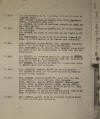
|
3.
1 May 1932.
Monthly Report of Events, Department of
Southern Bluefields,
Capt. Gordon
Hall, Bluefields, to Jefe
Director GN Managua, p. 3.
" . . . 15 Apr. Lt. STEPHENSON, T. M.
fr. temp. duty Bluefields to duty El
Rama. ¶ Cpl. ROLAND,
Sebastian #2249, Pvt. RIOS, Emeterio
#2247, discharged exp. enl. ¶
Lt. ROURKE, E. with 10 enlisted cleared
El Rama for La Tigra patrol. ¶
16 Apr. Cpl. ROLAND, Sebastian #2249,
jd. by re-enlistment to furlough.
¶ Lt. ROURKE, E. with 10 enlisted
fr. La Tigra to El Rama. ¶
Lt. STEPHENSON, T. M. with 10 enlisted
cleared El Rama on police Patrol to El
Recreo and returned. ¶ 17
Apr. Cpl. ANDERSON Joseph #4591, Pvt.
ALVAREZ, Eustacio #2273, fr. duty Wuani
to duty Bluefields. ¶ Sgt.
MARTINEZ, J. R. #1243, Pvt. VASQUEZ
Diego #3429 fr. duty 9 Co. No
Bluefields, to duty 7th Co. So.
Bluefields. ¶ 19 Apr. Lt.
CURCEY, L. returned Wuani fr. patrol to
Siuna. ¶ Lt. STEPHENSON T.
M. cleared El Rama for inspection trip
to El Recreo, and returned. ¶
Lt. ROURKE, E. cleared El Rama for
inspection trip to Muelle Real and
returned. ¶ 21 Apr. Pvt.
PILARTE, Nemecioo #4958 jd. by
enlistment. ¶ Lt. ROURKE E.
with 10 enlisted cleared El Rama on
patrol on Rio Siquia. ¶ 22
APR. Pvt. ACDAMA, Rodolfo #2485 fr. duty
7th Co. So. Bluefields, to duty 3rd Co.
(C.) Managua. ¶ Pvts.
ASTORGA, Barlan #4813, CALERO,
Maximiliano #4530, GUIN, Saldana #2438,
GOMEZ, Adolfo #2443, OCHOA, Pedro #2894,
VARGAS, Wilfred #2418 fr. duty
Bluefields to temp. duty El Rama.
¶ Sgt. CHAMORRO, C. #1652 with 10
enlisted cleared El Rama on patrol to El
Recreo and returned. ¶ 23
Apr. Sgt. CHAVEZ, A. #58 with 10
enlisted cleared Wuani on river patrol
and returned. . . . "
|
|
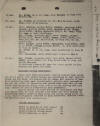
|
4.
1 May 1932.
Monthly Report of Events, Department of
Southern Bluefields,
Capt. Gordon
Hall, Bluefields, to Jefe
Director GN Managua, p. 4.
" . . . 25 Apr. Lt. STONE, W. J. fr.
temp. duty Managua to temp duty
Bluefields. ¶ 26 PR. Lt.
ROURKE, E. returned fr. Rio Siquia
patrol to El Rama, with 10 prisoners.
¶ 27 Apr. Pvts. ASTORGA, Barlan
#4813, MANZANO, Santiago #3852 VARGAS,
Wilfred #2418, GUIN, Saldana #2438,
OCHOA, Pedro #2894, CALERO Maximinio
#4530, fr. temp. duty El Rama to duty
Bluefields. ¶ Pvts. GARZON,
Jesus #4809, FERNANDEZ, Luis #4951, CRUZ
J. L. #4954, RUGAMA Alfonzo #4957, fr.
duty Bluefields to duty El Gallo.
¶ Lt. STONE, W. J. fr. temp. duty
Bluefields to duty El Gallo. ¶
Pvt. HERNANDEZ, Pablo #4956 awd. 5 days
B. and W. ¶ 29 Apr. Sgt.
RUGAMA, Fernando #195, Pvts. RUIZ,
Manuel #2682, GOMEZ, Pedro #2064 fr.
duty Bluefields to duty 3rd. Co. (C)
Managua. ¶ 10 enlisted
cleared El Rama for river patrol on Rio
Siquia, Rio Mico, Rio Rama. ¶
MILITARY DUTIES
PERFORMED: ¶ There
have been persistent reports from El
Rama since the 15 of April that bandit
groups are operating in that district
along the Rio Mico, Rio Siquia and Rio
Rama. All reports of bandits
activities have been investigated,
patrols have pursued as far as the
border of Chontales and guards have been
kept at the fruit loading points along
these rivers during cutting and loading.
Report of patrol forwarded by Area
Commander. ¶ Active patrol
has been carried on from Wuani and
Neptune Mines. One of these
patrols from Wuani met with success in
destroying bandit camps at Casa Vieja
and points along these trails. Report of
patrol forwarded by Area Commander.
Regular training schedules have been
carried out. ¶
POLICE OPERATION:
¶ Total on hand as of last report
26, Total confined during month 87,
Total released during month 64, Total
remaining on hand 49 . . . "
|
|
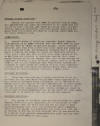
|
5.
1 May 1932.
Monthly Report of Events, Department of
Southern Bluefields,
Capt. Gordon
Hall, Bluefields, to Jefe
Director GN Managua, p. 5.
". . . GENERAL
POLICE CONDITION:- ¶
Twenty one arrests were made by patrols
from El Rama, who apprehended all local
men involved in the raids and robberies
in that district. All cases are
still under investigation, awaiting
witnesses. Otherwise police
conditions are good. Very few
arrests are made by outposts. Those made
are for minor offenses only. ¶
INTELLIGENCE:-
¶ 1. General state of territory
occupied: Quiet. Reports from
patrols in El Rama indicate that the
raids made in that district were by
local unorganized groups. Those
arrested declared that they were forced
into these raids and robberies by an
organized band. Investigation revealed
that a group of about 5 lead by one
Irias did cross the Chontales border,
force local river men into service with
them, raided as far as La Tigra and
returned to Chontales leaving their
local groups behind. It is not
thought that this is any attempt at
organized banditry in this district,
rather that it is in an attempt to rob
at this favorable time when banana
cutters are bringing in their stems and
selling them at river commissaries.
Reports from Wuani and Neptune Mines
after constant patrolling of these
district, indicates a quite area.
¶ MILITARY
SITUATION:- 2. There has
been nothing of enemy activities in the
Department for the past month to
indicate future operations or upon which
to estimate enemy activities. It
is reasonable to assume that there will
be attempted repartitions of local raids
similar to that of La Tigra, for it is
getting close to the wet and inactive
season and last minute attempts are
bound to occur. All district
commanders are on the alert for such
occasions and it is doubtful that any
attempt can succeed. ¶
ECONOMIC
CONDITION:- 3. The people
of the Wuani area are anticipating the
rainy season, which will give
opportunities to all people to wash
gold, rather than the usual very few who
are able to wash gold continuously with
their own artificial water supplies.
There are two groups of prospectors who
state they will get an average of 150
oz. of gold monthly. This is
considered to be a fairly large amount,
supposedly more gold than has ever been
panned previously in this area. . . . "
|
|
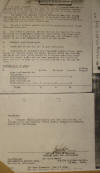
|
6.
1 May 1932.
Monthly Report of Events, Department of
Southern Bluefields,
Capt. Gordon
Hall, Bluefields, to Jefe
Director GN Managua, p. 6.
"A.xx
|
|
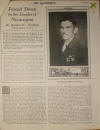
|
1.
May 1932.
"Forced Down in the Jungles of
Nicaragua," Staff
Sgt. Gordon W. Heritage, The
Leatherneck, May 1932, p. 1.
|
|

|
2.
May 1932.
"Forced Down in the Jungles of
Nicaragua," Staff
Sgt. Gordon W. Heritage, The
Leatherneck, May 1932, p. 2.
|
|
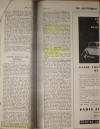
|
3.
May 1932.
"Forced Down in the Jungles of
Nicaragua," Staff
Sgt. Gordon W. Heritage, The
Leatherneck, May 1932, p. 3.
|
|
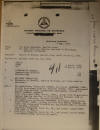
|
1. 4
May 1932.
Record of Events, Eastern Area, Month of
April, 1932, Col.
L. L. Leech, Bluefields, to Jefe
Director GN, Managua, p. 1.
"Reference:
General Order No. 140, 1929. ¶
A. PERIOD FROM: 1 April, 1932. TO:
30 April, 1932. ¶ B.
STRENGTH OF COMMAND. Commissioned
Officers 29, Enlisted Men 325 ¶
C. MILITARY OPERATIONS. 1.
Movements of Patrols, Guardia Nacional,
and other service personnel. ¶
Apr. 1 Two amphibians, Lieutenant
DAILEY, Lieutenant PARMELEE, USMC.,
pilots, Lieutenant LUCE and Corporal
WILSON, USMC., passengers arrived from
MANAGUA. Disembarked passengers, cleared
for PUERTO CABEZAS. Arrived.
¶ First Lieutenant HALL, Gordon,
USMC., joined from US. Appointed Captain
Guardia Nacional de Nicaragua and
assigned duty as Department Commander,
Southern Bluefields. ¶ Apr.
2 Two amphibians, lieutenant SAUNDERS,
Lieutenant WEIR, Lieutenant BINNEY,
USMC., pilots, arrived from PUERTO
CABEZAS, embarked two passengers (Lt.
LUCE and Cpl. WILSON, USMC.), cleared
for MANAGUA. Arrived. ¶
Lieutenant PALACIOS, Justo P., GN., and
patrol cleared NEPTUNE MINE for WUANI.
¶ Apr. 3 Lieutenant PALACIOS,
Justo P., GN., and patrol arrived WUANI
from NEPTUNE MINE. Nothing to
report. . . . "
|
|
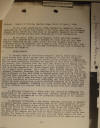
|
2. 4
May 1932.
Record of Events, Eastern Area, Month of
April, 1932, Col.
L. L. Leech, Bluefields, to Jefe
Director GN, Managua, p. 2.
" . . . On
the night 26-27 April, 1932, Eustace M.
Campbell, former bookkeeper at the
Bluefields branch of the Banco Nacional
de Nicaragua, escaped. Every
effort has been made to recapture
Campbell but to date no definite
information has been obtained as to his
whereabouts. ¶ On 24 April,
1932, Victor Simmons, civil prisoner
escaped from custody. Simmons had
been a trustee for some time and had
been recently convicted by the civil
courts for the unlawful killing of a
prisoner while he (Simmons) was a Raso
in the Guardia Nacional, serving at EL
GALLO. To date no definite
information has been obtained as to
Simmons whereabouts. ¶ 2
INTELLIGENCE. ¶ 1. General
State of Territory Occupied. Quiet.
There were constant rumors that bandit
groups were operating in both the
Northern and Southern Department during
the entire period covered by this
report. Patrols were constantly
checking the reports as they were
received without result. This
together with the fact that there was no
damage done in either department by
bandit groups, it is not unreasonable to
believe that with one exception all
these rumors were perhaps due to the
activity of small local groups. On
4 April, 1932, fifteen Guardia led by
sergeant Jimenez, deserted (See reports
in this connection), and traveled
northwest on the COCO RIVER to PRANZA
where they left the river and followed
trail generally north from that point.
When this group left the river at this
point they abandoned one heavy Browning
Machine Gun, which was later recovered
by Lieutenant RODRIGUEZ, GN. This
same group reinforced by about
thirty-five bandits attacked KISALAYA on
21 April, led by ex-sergeant JIMENEZ.
JIMENEZ and three others were the known
dead in this contact. All contact
with this group has been lost since that
date. ¶ E. Military
Situation: - Other than the
contact at KISALAYA, the activities of
the bandits have been very limited.
There is nothing upon which to base an
estimate as to the probable intentions
of the bandits during the month of May.
¶ 3. ECONOMIC SITUATION: -
The banana industry continues to operate
to almost maximum capacity affording
work to the large majority of local
laborers. The purchase price of
fruit from the independent planters
along the rivers is thirty cents against
fifty cents two years ago. The
Pearl Lagoon Canal which was built to
encourage rice planting in the area of
Big Lagoon and the town of Pearl Lagoon
is practically completed. The
Canal is one mile long and connects
Pearl Lagoon and the Caribbean Sea with
a branch of the Rio Escondido which
empties into the . . . "
|
|

|
3. 4
May 1932.
Record of Events, Eastern Area, Month of
April, 1932, Col.
L. L. Leech, Bluefields, to Jefe
Director GN, Managua, p. 3.
" . . . the
Bluefields Lagoon. The rice
planter is thereby enabled to bring his
commodity to Bluefields by canoe
eliminating the expense of
transportation across the Savannah
between Pearl Lagoon and Haulover.
The future of the rice industry is
somewhat questionable in view of the
fact that imported rice is cheaper on
the coast than that raised in Pearl
Lagoon. ¶ 4. SANITARY
CONDITIONS: - A woman venereal hospital
and prison was established due to the
initiative of the Guardia on 13 April.
The prison fund is sufficient to pay the
rest of the house, the Sanidad supplies
the medicines and equipment, and the
Municipality pays the salary of the
matron. Bluefields has long been
in need of a venereal hospital since the
Charity Hospital has no facilities for
care of such cases. ¶ 5.
Political Situation: - Quiet. The
wide rift between factional groups in
the Liberal Party would seem to become
more and more pronounced. The
division had its inception when the
Sacasa followers failed to get the
support of the pre-administration group;
was further aggravated by the adverse
ruling on the plebiscite held by the
Sacasistas in February and developed
into open hostility with the second
Liberal plebiscite in April. This
latter plebiscite was completely
dominated by the small local group of
administration adherents. Several
political meetings by both the opposing
Liberal factions were held during April.
All meeting were orderly. The
Conservative Party held its caucus for
the selection of cantonal clubs 24
April. Subsequently a convention
elected the Junta Directive of the
departments and delegated to the
National Convention. All meetings
of this party had a very small
attendance. Meetings were orderly.
¶ 6. No friction has been reported
between the Guardia and the civil
population. The press continues a
friendly attitude towards the Guardia.
¶ 7. Weather: - Weather conditions
have been very good and favorable for
patrolling. River and coastwise
transportation schedules have been
regular. Visibility for air
reconnaissance has been very good.
There have been some light showers
during the month. ¶ 8.
Condition of Telephone and Telegraph
Communications: - Civilian Tropical
Radio Telegraph Company – Excellent.
Guardia KISALAYA from 4 April – NONE.
Guardia Neptune Mine – has experienced
considerable trouble with condensor
during the month and communication has
been very limited. ¶ 9.
Condition of Roads and Trails – Good.
¶ F CONFISCATION OF ARMS. ¶
See Departmental Reports. ... "
|
|
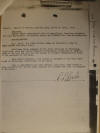
|
4. 4
May 1932.
Record of Events, Eastern Area, Month of
April, 1932, Col.
L. L. Leech, Bluefields, to Jefe
Director GN, Managua, p. 4.
" ...
TRAINING. ¶ Except where
interfered with by patrolling, training
schedules have been maintained.
Discipline except at KISALAYA has been
satisfactory. ¶
MISCELLANEOUS. ¶ On 1 April,
the Jefe Politico made an inspection
trip to PEARL LAGOON via motor boat.
¶ Guillermo Pena, manager of the
Banco Nacional de Nicaragua, Bluefields,
shot and killed himself on 23 April.
Consensus of opinion seems to be that
the act was the result of certain
irregularities found in the accounts of
the bank. ¶ Luis Arturo
Molieri, took charge as manager of the
Banco Nacional de Nicaragua, Bluefields,
on 25 April. ¶ Juan J.
Santamaria and Lino Garcia, civilians,
were found to have qualified for the
Military Academy and cleared via boat
for Managua on 28 April. ¶
L. L. LEECH"
|
|
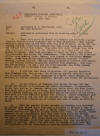
|
1.
12 May 1932.
Information gathered from my scouting
patrol this Area,
Lt. E. J. Surprenant, Puerto
Cabezas, to Jefe Director GN Managua, p.
1.
"1. There is a
group of thirty six bandits and fourteen
Guardias (Guardia Deserters from
Kisalaya) now in this Department.
They raided Sacklin a small town on the
Coco river the 30th of April, taking all
the Indians clothes, house hold effects
that they could carry and leaving the
Indians behind them naked. They
also took eight Indians from this town
prisoners (but later in the following 4
or 5 days most of them managed to
escape). They then proceeded to
Sandy Bay where they robbed the
commissary and killed the commandante.
Then headed in the direction of the
lines passing Curey, Swaura, both places
on the Oolang river. These bandits
are under General Francisco Morales,
Coronel Estrada, Coronel Salinas,
(Salinas being ex-guardia deserter from
Telpaneca) and Coronel Jimenez
ex-guardia deserter from Kisalaya.
They have two Sub-Thompson, one BAR.,
and one rifle grenade, the rifle grenade
having about ten to fifteen bombs for
same. ¶ 2. I verified that
there is fourteen (14) guardia deserters
from Kisalaya with this group. The
following guardia deserters carry the
following ranks. Vivian Hernandez
is a major, Julio Salazar is adjutant to
General Morales, Salmeron, Pontoja, and
Gudiel are Lieutenants. ¶ 3.
In the contact at Kisalaya with Gaitan
the man that was killed and thought to
be Jimenez was Pancho Montenegro, in
appearance he was very similar to
Jimenez, being very white, about the
same height, same hair, and a good set
of teeth, also carrying on his chin a
mole, while Jimenez carrying one but
this mole was in the corner of his
mouth. This made the
identification appear very similar.
Pancho Montenegro also had an old burn
on his arm with [which] was noticed on
the dead man. There is no doubt
that this information is correct and
that Jimenez is still at large. ¶
4. When the guardia killed Levonski in
Kisalaya they proceeded no further than
Laimus where they sent a courier to
Mocorum a town in Honduras. The
message was sent to Rafael Blanca (a
bandit commandante) Jimenez stating his
plans of joining forces with them.
In Pranza, Blanca answered it and
arrangements were made where this group
met General Francisco Morales who had
just come down the river from Bocay.
They met and went to Mocorum.
Later they went into the Banana Line at
Moss Farm and Louisiana with the
intention of robbing Vacarro commissary.
The . . . "
|
|
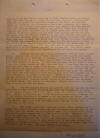
|
2.
12 May 1932.
Information gathered from my scouting
patrol this Area,
Lt. E. J. Surprenant, Puerto
Cabezas, to Jefe Director GN Managua, p.
2.
". . . activities
of the Guardia Nacional in this section
because so strong that they were forced
to leave, via Logtown, Cuyutini, across
the Lecus River, across the savannahs,
crossing the Ulwas and Saupuka trails
and entering the Bilwascarme trail and
following this trail about six miles
below Bilwascarme where they switch into
the Sacklin Trail and entered Sacklin,
raiding and robbing these poor Indians,
stealing all their property, rob a
little commissary which was the property
of Edwardo Arana [Eduardo Araña] (a man
that buys bananas off the Indians and
sells them the Bragman Bluff Co.) and
left Sacklin with most of the Indians
absolute naked and took eight Indians
prisoners with them. They then
went to Sandy Bay where they also robbed
two large commissaries and killed the
commandante of this place and the last
heard of them they were headed towards
Cuyutini to rob Browns Camp Commissary
but it is my opinion that for a while
they will not be active because they
have quite a bit of stolen property to
dispose of. They also claim that
they will not leave this Department for
at least six months. ¶ 5.
General Sandino and Pedron Altamirano
were at Bocay during April.
Sandino has or had at this time about
one hundred men poorly armed; Sandino is
in the best of health. A prisoner
that I had captured and confess to me he
was a bandit swore by all that is holy
and good that Sandino is alive. He
said that he seen him in Bocay in April.
I use very strong means and told this
man that I knew that Sandino was dead
but even then he claimed I was wrong.
There is no doubt in mind now that
Sandino is alive although I had been
hoping that he had died of some disease.
This group that are with Sandino are
under the impression that they are
trying to save the country from the
invaders and that their robbing is a
purely a necessity. Abram Rivera,
General, and Colonel Chavarria were also
in Bocay. Last heard of Sandino is that
he was at Chipotillo. General
Abram Rivera is at Marana and Chavarria
at Andrez Tarra, both places on the
Coco. Pedron Altimarino was last known
to be in the Pis Pis Area. ¶
6. The two guardia Flores and Alvarez
went to Honduras passing thru Ouka a
small town in Honduras and with the
intention of going to the banana company
there for work. There is a
strike there at present.
Rumors in Honduras say there is another
revolution brewing. One of the
leading factors of it seems to be the
strike at Ceiba. The town in name
Mocorum is a hangout for all bandits
wishing to stay there. It is about
a days hike from any point from Saulala
on the Coco to Kipla Pini on the Coco.
¶ 7. Two bandit spys were captured
by me. From information I gained from
them I believe very good and reliable
information, in the contact that Lt.
Gaitan had at Cuyutini seven (7) bandits
were killed, and one severely wounded
and he died shortly after. Chavarra has
sworn he would get Gaitain for this.
In my contact in Laimus, nine (9)
bandits were killed and two wounded and
both died before they got to Waspook.
These two contacts took place mine on
Saturday morning and Gaitans on Tuesday
morning. In Levonski’s contact at Browns
Camp only on bandit was killed.
The last attack on Kisalaya . . . "
|
|
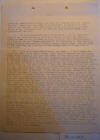
|
3.
12 May 1932.
Information gathered from my scouting
patrol this Area,
Lt. E. J. Surprenant, Puerto
Cabezas, to Jefe Director GN Managua, p.
3.
" . . . three (3)
bandits were killed, one severely
wounded and five others wounded.
These were all taken up to Mocorum.
Kisalaya is a sore spot to the bandits.
When this group return from Mocorum and
went to the lines, they sent back four
men who fire several shots into Kisalaya
and ran off. ¶ 8. In this
Department which is so large a spy is
certainly able to get information but
there is a large drawback and that is
after he does get it, it takes so long
to get in into Headquarters. If I
had had ten or fifteen guardias at two
instances on this scouting patrol I
could have made the bandits dance a
merry tune. But for fear of our
lives and the position we held rather
than be a dead hero I kept quiet.
¶ 9. This trip consisted of about
two weeks. I left Puerto Cabezas
and went out to Lecus River. From there
I cleared for the Wanks. Below
Bilwas Carmen I ran into the tracks of
the group that rob Sacklin. I went
into Bilwas Carmen and down to Sacklin
and after investigating I proceeded
immediately to Kisalaya where I offered
my services to Gaitan. As he could
not clear a patrol out as he had only
one sub-thompson the others being two
BMGs and a Lewis, I then left Kisalaya
with my two guardia and one civilian and
went as far as Bilwas Carmen where I
crossed over and went into Honduras.
From there I got to a little town name
Auca and form there I went to Mocorum.
I had gained reliable information that a
man by the name of Jones had a automatic
which belong to one of the guardia that
deserted Kisalaya. We reached
Mocorum and I sent my civilian into town
to gather information. A guardia
patrol of Honduranians had come into
town the day before and when they seen
this spy of mine they became suspicious
and followed him back to where we were.
Upon seeing us they opened fire but we
quickly retreat and manage to get away.
I then proceeded back towards the Wanks
where I arrived at Wira Pani. Here
there were nothing to show bandits had
been there lately. I went to
Prenza were Gaitain found the BMG but
found nothing. At this time we had
not eaten for two days. We found a
few bananas here and next morning built
a bamboo raft and floated down to
Kisalaya where we eat. From there
we went down to Waslaw where rumors were
the bandits were crossing over to
Honduras but arriving found that this
was false. I captured one spy
there but he was killed in trying to
escape. From there I went to
Andres where also information seem to be
that the bandits had gone there.
All quiet. I then went to Cabo
Gracias where another spy was captured.
We had one pistol with 14 rounds and a
cutacha. We had been sent by the
bandits to gather all information
possible from here. How many commissary
guardias etc. This man was shot
while trying to escape from me while
being questioned. I then returned
to Puerto Cabezas for further orders
from Managua. This group of
Guardia deserters from Kisalaya are with
this group of bandits under General
Francisco Morales. They are well
armed, and a dangerous group and I will
have to admit very small chance at
present of getting any of them. I
have made a request to start a civico
branch on the Coco during this emergency
and believe I will have a better chance
to get these beggars. . . . "
|
|
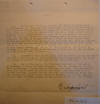
|
4.
12 May 1932.
Information gathered from my scouting
patrol this Area,
Lt. E. J. Surprenant, Puerto
Cabezas, to Jefe Director GN Managua, p.
4.
" . . . 10.
Gaitan has certainly restored the faith
of the Indians in the Guardia but they
are sort of bewildered by the swing the
bandits have taken in robbing Sacklin
and Sandy Bay without any Guardia patrol
doing anything. I firmly believe
that the way a strong patrol leaves
Kisalaya to go below. Kisalaya is
going to be hit again by the bandits.
With the civicos I start up below
Kisalaya we will have the bandits
guessing. If they go to Cabo
Gracias I shall be right behind them.
If they rob any town below Kisalaya the
same will be. With my civicos who
shall all be pick man and with spies
that will let me know hours before the
bandits get near me I believe that there
will be a hold up on this brutal raiding
and robbing of these Indians. As strange
as it seems if I ever go back up to
Waspook I shall have in the neighborhood
of three hundred (300) Indians. ¶
11. Outside of this bandit group that
has these guardia deserters the rest of
the bandits in this department are
poorly armed. It would be a great
opportunity to hit them now and drive
them out. ¶ 12. Out of the
twenty five Guardias that were in the
mutiny at Kisalaya, 7 return to Puerto
Cabezas. Two (2) Alvarez and
Flores went to Honduras. Tecero
came to Moss and ran away. This
amounts to ten. That would leave
15 guardia deserters. Now there
are 14 with General Morales. I
could not get definite information but
heard that one guardia was killed in the
battle of Kisalaya and buried. Another
is that these fourteen guardia killed
him and buried him near Prenza. ¶
E.J. SURPRENANT"
|
|
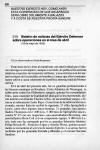
|
1.
18 May 1932.
Boletín de noticias del Ejército
Defensor sobre operaciones en el mes de
abril, Gen.
Augusto C. Sandino, Cuartel
General del EDSNN, A los observadores
Indohispanos, p. 1.
(Source:
A. C. Sandino, El pensamiento vivo,
v. 2, pp. 220) " .
. . El 4 de abril del presente año, los
ex guardias pertenecientes a las fuerzas
enemigas en Kisalaya, Costa Atlántica de
Nicaragua, se sublevaron contra los
filibusteros yanquis, quienes les
comandaban. Ellos, para conseguir
la finalidad del plan que se les
encomendó, dieron muerte a un teniente
Charles Lebos, de nacionalidad yanqui, e
hirieron al subteniente Carlos Rayo.
Como fruto de la sublevación mencionada,
nuestro Ejército recibió lo siguiente:
21 rifles Springfield y Lewis, entre
ellos algunos lanza-bombas, 21 granadas,
una ametralladora Thompson con 1 600
tiros, 5 000 tiros de Springfield, una
escuadra N° 45 con seis magazines, una
ametralladora Browning, una
ametralladora Bron-Colt con un
competente equipo, 9 000 tiros Lewis;
todo esto fue entregado por los ex
guardias Sebastián Jiménez, Felipe
Briceño H., Francisco López y Aurelio
Flores, quienes actualmente se
encuentran al servicio de nuestro
Ejército. Las armas fueron recibidas por
los generales Estrada y Morales y el
coronel Sócrates Sandino. . . . "
[NOTE: Sandino's reference here to the
death of the yankee "Charles Lebos"
probably refers to Charles Levonski,
killed in the Kisalaya mutiny; there is
no other USMC death during this period
that comes close to Sandino's spelling.]
|
|
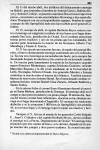
|
2.
18 May 1932.
Boletín de noticias del Ejército
Defensor sobre operaciones en el mes de
abril, Gen.
Augusto C. Sandino, Cuartel
General del EDSNN, A los observadores
Indohispanos, p. 2.
" . . . El
21 [de abril] fue atacado por nuestras
fuerzas, al mando del general Morales,
el nuevo destacamento enemigo acantonado
otra vez in Kisalaya. En esta vez
el enemigo se encontraba más fuerte,
pero siempre fue desalojado después de
una hora y tres cuartos de encarnizado
combate. De nuestra parte
lamentamos la muerte de los hermanos
sargento mayor
Francisco Montenegro,
capitán Zeledonio Gutiérrez, teniente
Marcelino Rugama y la del joven
estudiante de la Universidad de León,
Nicaragua, Octavio Oviedo. Los
generales Morales y Estrada continúan su
marcha sobre el interior del Atlántico.
También tenemos fuerzas de reserva en el
mismo litoral. En el mencionado
combate resultaron heridos: teniente
Rafael César Zamora, Orlando Baldizón y
Santos Godoy. . . ."
|
|
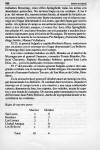
|
3.
18 May 1932.
Boletín de noticias del Ejército
Defensor sobre operaciones en el mes de
abril, Gen.
Augusto C. Sandino, Cuartel
General del EDSNN, A los observadores
Indohispanos, p. 3.
" . . .
Bajas de nuestra parte: . . . Kisalaya:
4 muertos, 3 heridos . . . "
|
|
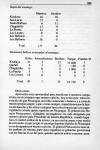
|
4.
18 May 1932.
Boletín de noticias del Ejército
Defensor sobre operaciones en el mes de
abril, Gen.
Augusto C. Sandino, Cuartel
General del EDSNN, A los observadores
Indohispanos, p. 4.
" . . .
Bajas del enemigo: . . . Kisalaya:
16 muertos, 10 heridos . . . ¶
. . . Elementos bélicos avanzados del
enemigo: . . . Kisalaya: 21 Rifles, 3
Ametralladoras, 21 Bombas, 15 600
Parque, 1 Pistola 45 . . . "
|
|
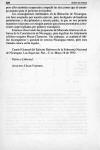
|
5.
18 May 1932.
Boletín de noticias del Ejército
Defensor sobre operaciones en el mes de
abril, Gen.
Augusto C. Sandino, Cuartel
General del EDSNN, A los observadores
Indohispanos, p. 5.
|
|
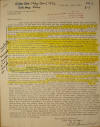
|
18 May 1932.
Letter from A. O.
Danneberger, Yulu, Nicaragua, to
the Bretheren of the S.P.G.
"Dear Brethren:- ¶ Ever
since the bandits made their first
assault which caused the cruel murder of
Br. Bregenzer, it has been very
difficult for the missionaries, whose
duties necessitate their travelling to
and staying at some inland station, to
know how to act in face of the many
reports of the activities of the bandits
which reach his ears continually.
Having done quite a bit of travelling
and having spent most of my time during
the rather perilous year at an inland
station I am in a position to state how
these reports can be valued. I
must say that nine out of the ten are
nothing but wild rumours, and even the
10th report, although based on truth, is
greatly exaggerated. However, not
knowing which of the many reports if
going to be true, it will be understood
that the tranquility in our work has
suffered immensely. If we only
knew Sandino’s and his adherers attitude
towards our mission. Everybody
knows that his attacks are in the first
place directed against the Americans as
the intruders in the political affairs
of Nicaragua. But we do not know
whether Sandino also aims at the
extermination of our mission. Most
of our missionaries think so, and the
murder and plunder at Musuwas seem to
confirm their opinion. Threats are
reported to have been made against the
individual missionaries, but it is not
sure whether they had been made by the
bandits or whether they have originated
in the minds of the Indians who are
anxious for the safety of their
missionaries. The bandits have
visited quite a number of our stations
and out-stations and although in almost
every case it was reported that they had
been looking for the missionary, yet to
me it seems strange that they did not
harm the mission property, when they did
not find the temporal owner. A
Spaniard will not rest until he has
taken his revenge in some way or other.
At the last attack in Sandy Bay they
took all Mr. Hurlstone’s goods, but they
did not enter the mission house, nor did
they any injury to Mr. Hurlstone
himself, although they must have known
that he was keeping services every
Sunday. It should be mentioned
that Tuburus was totally destroyed,
including the new church and the
evangelist’s house; but at that time the
bandits were enraged because they found
nobody in the village and were thus
hampered in their advance down the river
towards the railway line. ¶
There seems to be no hope for an
improvement of this most unfortunate
situation. At present the various
political parties are involved in a
lively propaganda for the election in
Nov. Dr. Sacasa is a favorite, not with
all, but with many liberals and with the
Indians. But even his eventual
nomination for the presidency will
apparently not solve this bandit
problem, for according to a notice in
"La Patria" Sandino published a
communication which contained an insult
against Dr. S. The same paper
reports that Pedron, one of Sandino’s
generals, shot his colleague, the
general Caracas, because he expressed
sympathy for Dr. S. ¶ What
shall the missionary do in this
uncertain situation in our missionfield?
The abandonment of the stations of the
upper Wangks was unavoidable, as the
bandits have taken possession of the
territory. But what of those places
which are in danger of being taken
unawares? Shall the missionary
leave his flock and seek a place of
safety, such as Bilwi or Bluefields?
Or shall he keep his post trusting in
the Almighty God and Father, without of
course running into danger blindly?
And if in this case, something should
happen to him, will he be accused of
tempting providence and of mistaken
bravery? I might mention that this
superintendent of the agricultural
department and the inspector of the
line, with whom I have travelled
repeatedly, are making frequent trips to
the end of the line. The
superintendent over the banana farms on
the new line, whom I married lately to a
German Moravian, lives with this wife
right amongst the farms and, although
the National Guard is near enough to be
on the spot in case of an attack, he yet
is in constant danger of being assailed
by loitering groups who are becoming a
greater pest and danger than the
organized Sandinistas. ¶ I
am asking these questions because I know
they will help you to understand our
position and will meet with your
sympathetic and prayerful interest which
will help us decide what to do in the
hour of danger and perplexity and thus
insure the continuation of our Master’s
work in Nicaragua. ¶ With
cordial greetings, ¶ yours
very sincerely, ¶ (signed)
A. O. Danneberger"
|
|
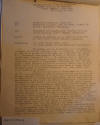
|
1.
19 May 1932.
Informe de
contacto con un grupo de bandoleros en
"SING SING", Puerto Cabezas,
2nd Lt. Francisco
Gaitan,
Puerto Cabezas, to Col. L. L. Leech,
Bluefields, p. 1.
|
|
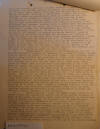
|
2.
19 May 1932.
Informe de
contacto con un grupo de bandoleros en
"SING SING", Puerto Cabezas,
2nd Lt. Francisco
Gaitan,
Puerto Cabezas, to Col. L. L. Leech,
Bluefields, p. 2.
|
|
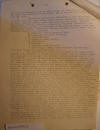
|
3.
19 May 1932.
Informe de
contacto con un grupo de bandoleros en
"SING SING", Puerto Cabezas,
2nd Lt. Francisco
Gaitan,
Puerto Cabezas, to Col. L. L. Leech,
Bluefields, p. 3.
|
|
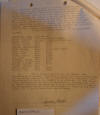
|
4.
19 May 1932.
Informe de
contacto con un grupo de bandoleros en
"SING SING", Puerto Cabezas,
2nd Lt. Francisco
Gaitan,
Puerto Cabezas, to Col. L. L. Leech,
Bluefields, p. 4.
|
|
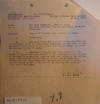
|
5.
19 May 1932.
Informe de
contacto con un grupo de bandoleros en
"SING SING", Puerto Cabezas,
2nd Lt. Francisco
Gaitan,
Puerto Cabezas, to Col. L. L. Leech,
Bluefields, p. 5.
|
|
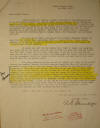
|
20 May 1932.
Letter from A. O.
Danneberger, Puerto Cabezas, to
Dr. S. H. Gapp, Moravian Church,
Bethlehem PA.
"Dear Brother
Gapp:- ¶ Since writing the
enclosed letter addressed to the
Directors of the S.F.G. my wife and
myself have come to Puerto Cabeza
(Bilwi). We had disturbing reports
about the bandits having come to our
out-station Sisin and to ascertain the
truth we came here. Coming out to
the railway line we heard that the
National Guard had engaged the bandits
in battle quite close to our church and
that the church building was partly
damaged through a bomb which was thrown
from an aeroplane. These reports
were confirmed when we reached Bilwi.
The evangelist and his family are safe.
¶ Two days ago the whole town was
greatly excited. Somebody brought
the news that 300 bandits were
approaching Bilwi. As usual it was
a false rumour. However, it
brought an increase of marines, national
guards and aeroplanes, and a torpedo
boat arrived promptly. ¶ Br.
Stortz had left the day before for a
visit to Dakura and Sandy Bay.
Mrs. Stortz and her two little ones are
here in Bilwi and they will probably
remain here for quite a time. They
are quite safe here. We are not so
far away and can come over any day in a
couple of hours. Mrs. Danneberger
and myself intend to return to Yulu
tomorrow. We will of course be
very careful, and next week we will come
back to Bilwi for our monthly visit.
¶ The rainy season is setting in
and this should put a stop to the
activities of the bandits.
However, in their desperate condition
they will probably not so easily be kept
back by rain and floods. The
situation for our Indians is most
deplorable. I have never seen so much
starvation in the more than 23 years
which I have served in the country.
The big company with all the privileges
which it offered to our Indians during
the last years has taught the Indians to
depend on them instead of their
provision groups; exceptional big floods
during the last rainy season have
destroyed lots of their plantations;
bandits are doing away with their
cattle, and so our Indians are harassed
all-round. Most of them are
working hard during this dry season.
We hope it will not be too late.
Any help which the government or any
other party could render would be
unadequate to meet the present need.
We hope and pray that our Indians will
come out of this tribulation a better
people, more industrious, more ambitious
and more honest too. ¶
Hoping to hear from you in the near
future, I am ¶ with best
regard to you and Mrs. Gapp ¶
Sincerely yours ... "
|
|
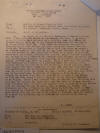
|
20 May 1932.
Report of my patrol,
2nd Lt. J.
Ernesto Rourk A., Rama, District
of Siquia, to Col. L. L. Leech,
Bluefields, p. 1. [NOTE:
This is an English translation of
Rourk's report; the Spanish original
appears immediately below.] "1.
By orders of the District Commander I
cleared here the 13th of May, 1932 for
Muelle de les Bueyes, Rio Mica, to
pursue a group of bandits that was said
were operating near that place. We
cleared here at 9:00 AM, in the
Company’s Motorboat and arrived at El
Recreo about 10:30 AM. From there
the motorboat returned to Rama and we
got some sailors and small boats and
cleared there at 11:30 AM. We
arrived at Presillitas at 8:00 P.M.
where we camped. We cleared there at
6:00 A.M. On our way I was
informed that the bandits had arrived at
Paso Lajas and El Coral in a number of
about 30, armed with old rifles,
shotguns and pistols. Among them
was a guardia who is said to be a
deserter who deserted from Acayapa,
Chontales. His name is Policarpo
Francesca, from Honduras. We arrived at
Muelle de les Bueyes at 7:30 P.M. where
we camped. There I knew that the
guardia from Chontales in a number of 6
guardias under the command of Lt.
Antonio Tercero had arrived as far as
Presilla Grande and from there they
cleared for Santa Tomas and on their way
there were informed that the bandits
were six hours walking ahead of his
patrol, but getting near up to the place
the guide, who was a bandit, made them
last their way in the mountains.
We arrived at Guatuza at 7:45 PM where
we camped. We cleared from there
at 5:00 AM and arrived at Las Mangas at
6:00 PM. From there I sent a
Telegram to the District Commander of El
Siquia. There I was informed that
the Guardia from Chontales were pursuing
the bandits and these were near San
Pedre of Lavaga. Knowing this I
thought best to return and cleared there
at 5:30 AM taking another road and
passing through El Ayote, Paso de Lajas,
El Canoja, and Chillmate arriving at
Muelle de les Bueyes at 5:00 PM. where
we left the animals we occupied for the
patrol. We camped there and
cleared at 5:00 AM for Rama and arrived
at El Recreo at 7:30 PM, where we
camped. We cleared the following
day at 5:45 AM and arrived at El Rama at
9:00 AM. ¶ E. ROUKE"
|
|
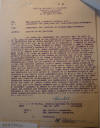

|
20 May 1932.
Report of my patrol,
2nd Lt. J.
Ernesto Rourk A., Rama, District
of Siquia, to Col. L. L. Leech,
Bluefields (2 images), p. 2.
(Second
image: 1st Endorsement by Col. Leech, 25
May)
|
|
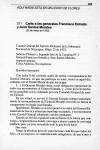
|
22 May 1932.
Carta de Gen.
Augusto C. Sandino, Cuartel
General del EDSNN, a los generales
Francisco Estrada y Juan Santos Morales,
Costa Atlántica Nicaragüense, p. 1.
(Source: A. C. Sandino,
El pensamiento vivo, v. 2, p.
225)
|
|
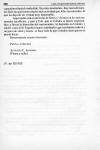
|
22 May 1932.
Carta de Gen.
Augusto C. Sandino, Cuartel
General del EDSNN, a los generales
Francisco Estrada y Juan Santos Morales,
Costa Atlántica Nicaragüense, p. 1.
(Source: A. C. Sandino,
El pensamiento vivo, v. 2, p.
226)
|
|
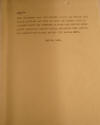
|
23 May 1932
(0930).
Radiogram on Lt.
Earl Gray contact with Pedrón
near Neptune Mines.
"8622
LIEUTENANT GRAY WITH FIFTEEN GUARDIA HAD
CONTACT WITH PEDRON ALTAMIRANO AND GROUP
OF ABOUT ONE HUNDRED FIFTY AT FOURTEEN
THIRTY MAY TWENTYONE AT POINT NEAR
NEPTUNE MINES BANDIT CASUALTIES UNKNOWN
GUARDIA CASUALTIES NONE CAPTURED FROM
BANDITS FOUR RIDING ANIMALS WITH SADDLES
0930"
|
|
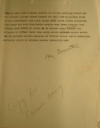
|
23 May 1932
(1600).
2nd radiogram on
Lt. Earl Gray contact with Pedrón
near Neptune Mines.
"8624 LT
GRAY WITH COMBINED GUARDIA AND CIVICO
PATROL OF TWENTY MEN HAD CONTACT LASTING
THIRTY MINUTES ONE MILE WEST OF NEPTUNE
MINES ON MAY TWENTYTHREE WITH LARGE
BANDIT GROUP UNDER PEDRON ALTAMIRANO
THIS GROUP HAS BEEN THREATENING GUARDIA
POST THERE FIGHTING VERY INTENSE UPON
RETURN OF PATROL TO NEPTUNE MINES
CUARTEL WAS ATTACKED BY ANOTHER GROUP
FROM NORTH ATTACK REPULSED PLANES BOMBED
AND REDISPERSED BANDITS BREAKING UP
FURTHER ATTACK BANDIT CASUALTIES
SEVENTEEN KILLED NO SERIOUS GUARDIA
CASUALTIES 1600"
|
|
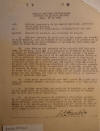

|
25 May 1932.
Reporte de contacto con intencion de
ataque, Oficial Comandante de la Guardia
Nacional, Distrito de la Mina Neptuno,
J. A. Somarriba
M., al Comandante del
Departamento de Bluefields del Sur (2
images).
(second
image: 1st Endorsement by Col. Leech, 11
June)
|
|
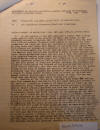
|
1.
27 May 1932.
Detail of activities since 18th May,
1932, to present date,
2nd. Lt. Earl T.
Gray, District of Neptune Mine,
to Dept Commander, Bluefields, p. 1.
"1. On the morning of the 19th, received
a report that a large group bandits were
in the vicinity of Wauni and Siuna.
It was generally assumed in Neptune that
the bandits were a long way from this
District, however finqueros were coming
in bringing all their possessions but
would not give any information regarding
location or even infer that there were
bandits in the area. Their manner
was very strange and unusual. We
dispatched a runner to try and discover
the disturbances. About ten thirty
same morning a native came running into
Neptune very excited and reported a
group of three hundred men under Pedron
Altamirano about an hour and a half from
Neptune Mines. Also reported
another group about one hundred fifty
under Jefe Peralta. Native stated
both groups were advancing on our
station. Considered immediate
offensive action impractical as our
automatic weapon was with patrol in
Tunky and further believed the reported
circumstances necessitated the defense
of the Mine, primarily, until we could
further ascertain just what the
situation might be. The people
living in the Mine of course got
terribly excited and with some
difficulty they were quieted and assured
of their safety. Dispatched a
runner to Tunky patrol notifying them to
return to the Mine and expect trouble en
route. Also started runner to
Wauni who was captured same day. Formed
heavy guard throughout night. ¶
2. Morning of the 19th, patrol returned
from Tunky with nothing more than
rumors. Sent two men to try and
reach Wauni, and attempt to get definite
information location of bandits.
One of these men was captured, the other
escaped and returned Neptune, bringing
authentic data on bandit groups.
Dispatched one more man to Wauni who
reached there and reported to Lieut.
Curcey. Throughout night a machine
gun or automatic weapon was fired twice.
Up to the morning of the twenty first I
still could not get any direct location
of bandit forces. In the afternoon
of the twenty first I cleared with ten
Guardia and five Civicos to ascertain
and verify reports and to be able to
give Curcey an accurate point when he
arrived as I was expecting him then.
My direction was due south of NEPTUNE to
destination of largest group, it was
about six miles to this place and when
we were about half way I ran up to the
guide and ask how much further to go.
He told me and I turned half around to
motion the patrol on when I glanced
through the bush and saw five armed men
pass slowly by and looking direct at me.
For a minute I thought it was Lieut.
Curcey’s civicos. I flank the
patrol through the bush, which was very
heavy, and found another now well worn
trail alongside of a very steep hill,
right angles to our original one.
Patrol gathered together in the trail
and we ran to . . . "
|
|
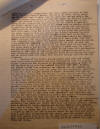
|
2.
27 May 1932.
Detail of activities since 18th May,
1932, to present date,
2nd. Lt. Earl T.
Gray, District of Neptune Mine,
to Dept Commander, Bluefields, p. 2.
". . . catch up with this group (then
the trail showed evidence of many having
past). The bandits opened fire on
us at about thirty yards. The
growth was so large that we could not
see but only a few of them, however from
their position and amount of firing I
estimate about six hundred fifty, but I
do not believe Pedron was in this group
as was previously reported. Patrol
was unable to ascertain any bandit
causalities if any at all. There
were no Guardia casualties. We
captured three mules and one horse all
equipped for riding, with saddles.
Patrol then cleared for the Mine and
when we were within half mile heard
rifle and pistol shots to our right and
left. Then the heavy browning from our
Cuartel was fired. I assumed the Mine
was being attacked so proceeded
cautiously and fast to do what I could.
On arrival, however found out Lieut.
Somarriba, who was manning and holding
that position, had fired at a small
group that were soon creeping along
toward the Cuartel. These bandits
were dispersed. Lieut. Somarriba
remained in the Cuartel on the hill to
hold that position and I took up a
station in the lower part of the town
with ten armed guardia and civicos to
maintain a guard over the trails and
ravines. Sergeant Garcia was
placed on the other hill overlooking
Neptune to take care of that point using
the “BAR” there, being the most
effective position for it. Bandits
fired on him during the night and he
routed them with about five minutes
fire. My position was not
bothered. ¶ 3. Morning of
the twenty second, planes came over and
bombed area south, south by southwest
and east. Particularly they hit a
group almost square, who was reported to
be Peralta and group. A woman he
had captured along with her husband
reported that Capt. Mulcahy and planes
killed five including her husband but
she escaped and reported to me, stating
that the group had been completely
scattered. I received other
similar statements almost identical from
natives who had been hiding from the
bandits in that vicinity. At this
time I had SGT. GARCIA and a ten man
patrol over to the Company Bodega to
confirm a report of a group in that
location. When he arrived the
building had been partially looted but
bombing cleared them out. In the
afternoon Somarriba cleared with twenty
men to the Eden Mine on report of main
group passing through there. The
main group had passed through. It
was about four o’clock so he returned to
the Mine. While Somarriba was in that
vicinity, we heard a very heavy fire for
about ten minutes, and assumed he was in
contact with them, but on his return
found that it must have been “Gonsales”
and group, who had been to our north,
not recognizing Pedron and opened fire.
Throughout the night we kept the same
position as stated above. ¶
4. Activities had quieted during the
night and on the twenty third bandits
were reported to be taking the Biltigni
trail and leaving. Believing they
could not travel fast with the stolen
cattle, I cleared with a patrol of
twenty Guardia and Civicos leaving from
Neptune went over a longer trail but
which I thought would not take me
between the big groups and get in front
of both of them to the north. I
slipped my patrol out and by one as
secret as possible and formed them a
mile west of Neptune. We had
hardly gone two hundred yards, when they
opened fire on us in the open trail but
thickly wooded on each side. My
point which in this firing position
became the right flank was forced . . .
"
|
|
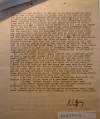
|
3.
27 May 1932.
Detail of activities since 18th May,
1932, to present date,
2nd. Lt. Earl T.
Gray, District of Neptune Mine,
to Dept Commander, Bluefields, p. 3.
". . . into hand to hand conflict to get
out of and gain combat position.
Pedron blew a bugle during the contact
and at the beginning called out (Now I
have you Macho, you and all of your
dogs) as interpreted by patrol.
The contact lasted for an hour and a
half and we killed known seventeen
bandits. There were no serious
Guard casualties. I was dazed for
a few minutes by bomb explosion close to
me and three men were slightly cut by
machetes. No one shot, some grazed
but it did not bother them. I
tried to get their automatic weapons and
the bugle, but they got away.
Captured three more riding animals and
saddles, little correspondents and pick
up some of their spent and good
ammunition. Planes arrived just as
I got back to Neptune and the Cuartel
was again firing at group in rear of the
Mine. During my contact the power
plant was being attacked at Big Falls
but Civicos dispersed them from that
point. Planes again hit the right
spot to the West and am certain they
created causalities from the mess of
torn flesh and blood found in that area.
Bandits to the south fired on plane with
machine gun or automatic weapon when
planes fired machine guns. The
airplanes were a decisive end of the
bandits contemplated attack on Neptune
Mines. ¶ 5. On the twenty
fifth I again cleared with a combat
patrol of twenty two, to meet Curcey at
the Star Mine and continue after
bandits. About twelve noon a
native appeared, who was identified and
well known in this vicinity, and
reported that at ten o’clock a group had
passed into his place and robbed him of
everything. I cleared for that
district and the house had been torn up.
The man’s mule and some cattle were
stolen. Proceeded to the Piz Piz
Bodega did not locate group and returned
Neptune after dark. Lieut. Curcey
arrived the next afternoon, twenty sixth
and reported many large camps en route
from Wauni. Lieut. Curcey cleared
this morning, twenty seventh for
bandits. Believe he will get them
too. ¶ 6. I am very positive
that no bandit force can ever enter the
Neptune Mines as long as there is a good
armed force here. ¶ 7.
Official contact reports being forwarded
next mail. ¶ 8. These recent
bandit activities were the most unusual
and perplexing than any I have ever seen
in Nicaragua. ¶ 9. Bandit
Jefes were as follows: Pedron
Altamirano, Pedro Irias, Simon Gonzalez,
Peralta and a Col. Pineda. All of them
were identified. ¶ E. T.
GRAY
|
|
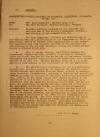
|
27 May 1932.
Valuable Services Rendered by Aircraft
Squadrons, Col.
L. L. Leech, Bluefields.
|
|

|
1.
27 May 1932.
Resume of Events in the Eastern Area
during Period May 18-28,
Col. L. L. Leech,
Bluefields, p. 1.
|
|
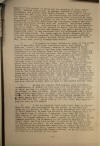
|
2.
27 May 1932.
Resume of Events in the Eastern Area
during Period May 18-28,
Col. L. L. Leech,
Bluefields, p. 2.
|
|
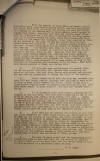
|
3.
27 May 1932.
Resume of Events in the Eastern Area
during Period May 18-28,
Col. L. L. Leech,
Bluefields, p. 3.
|
|
|
|
|
PREVIOUS
NEXT |
|
|
|
|
|
|
|

